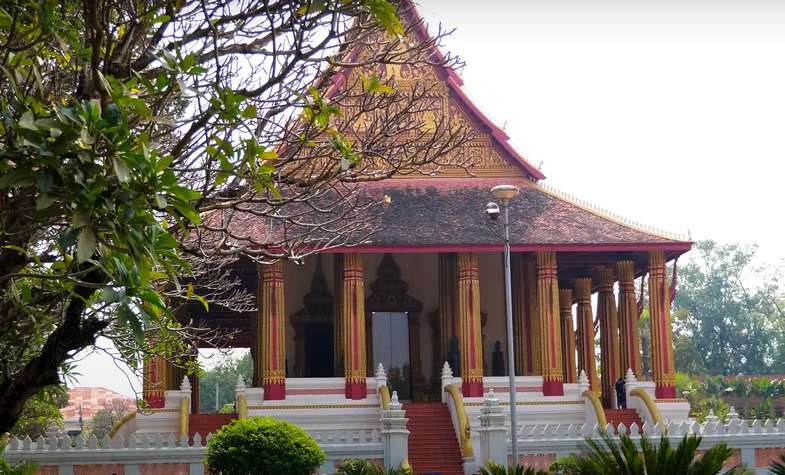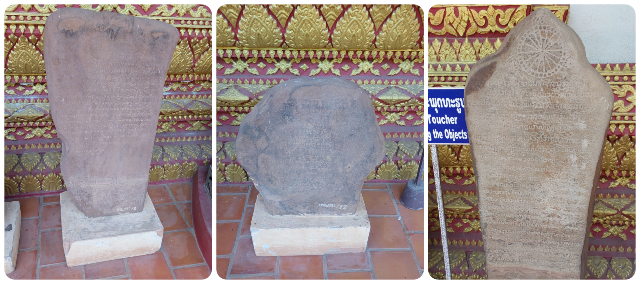Situated on Setthathirat Road, just opposite to Wat Si Saket and very close to the Presidential Palace is Ho Phra Kaew, one of Vientiane's most ancient temple.
It is not an active temple now that means the site is no longer used for worship but is still considered a sacred place since the Emerald Buddha was once housed here.
Ho Phra Kaew was called "Wat Phra Kaew", that is the "Temple of Emerald Buddha" till the time the statue was housed there. It is now called "Ho Phra Kaew" or the "Altar of the Emerald Buddha" as only the empty altar remains. The image is in a wat with the same name, Wat Phra Kaeo in Bangkok.
History:
- Built in 1565 by King Setthathirat, it was the royal chapel of Laos Monarchy and also housed the Emerald Buddha.
- Since the temple was used as Setthathirat's personal place of worship, no monks used to live here.
- Emerald Buddha remained in the temple for almost 200 years till 1778, after which the Thais invaded Vientiane.
- the image was taken to Chiang Mai and is then to Bangkok where it still remains.
- the temple was rebuilt in 1816 by King Anouvong and a new image was placed at the altar.
- Sadly, Vientiane was again attacked in 1828.
- It was rebuilt in 1936-1942.
- It was renovated in 1970 and again in 1993 and has remained like that till now.
entrance to museum
Wat Si Saket opposite Wat Phra Kaew
entrance ticket
2,000 years old stone jar on display from the Plain of Jars
On the side, is a beautifully carved tree trunk

front view of sim
The
gable of sim is intricately decorated in gold on red background. Buddha
is seen on a three-headed Erawan or Airawat in the center.
There are three Buddha images seated on a lotus below Airawat. The rest of the gable is decorated with flowers and leaves.side view
The multi tiered roof has a dok so faa in its center and is decorated with Naga finials. The sides on the roof have chofaa. dok so faa on top of sim
side entrance
The entrance on all sides has a stairway with naga guarding on both side of entrance. The body of naga extends over the balustrade towards the temple.
naga at the entrance
window of sim
wooden crafted door
Original carved wooden doors to sim still stand to date. They are behind glass to preserve them.
At the entrance, are two Buddha images in Abhay mudra.
Inside the museum, there are glass cupboards along the wall in which are displayed stone tablets, carvings, manuscripts.
In the center is an empty small altar in which the Emerald Buddha was once kept. At the rear of the room, is an image of Buddha. People come and pay obeisance here. Unfortunately, taking pictures in not permitted inside the museum.
A corridor runs all around the central room. It probably served as a corridor for circumambulation . Stone stele, images of Buddha have all been placed in the corridor now.
inscribed stone tablets
corridor with Buddha image
The walls are beautifully decorated through out.
17th -18th century unusual standing Buddha mudra
Buddha stands with arms crossed in front of the waist with right hand covering the left hand. After Buddha attained enlightenment, he was filled with gratitude and stood in this mudra in front of the Bodhi tree without blinking his eyes for a week.
This act of Buddha is a symbol of great appreciation and connection with the tree, reminding us to cultivate gratitude for things that give us happiness.
the original post still stands
stone tablets by the side of corridor
Buddha in bhumisparsha mudra
a stone tablet with praying Buddha
rear side of sim
Two statues of Buddha stand at the rear side of sim. One statue stands in abhay mudra while the one on my left side is Buddha's readiness to help and assist all beings mudra.
Though the Emerald Buddha is not inside the museum, the place is worth a visit.
Timings:
8 am to 12 13:00 to 16:00





































No comments:
Post a Comment
Thanks for visiting my blog. Your feedback is always appreciated.